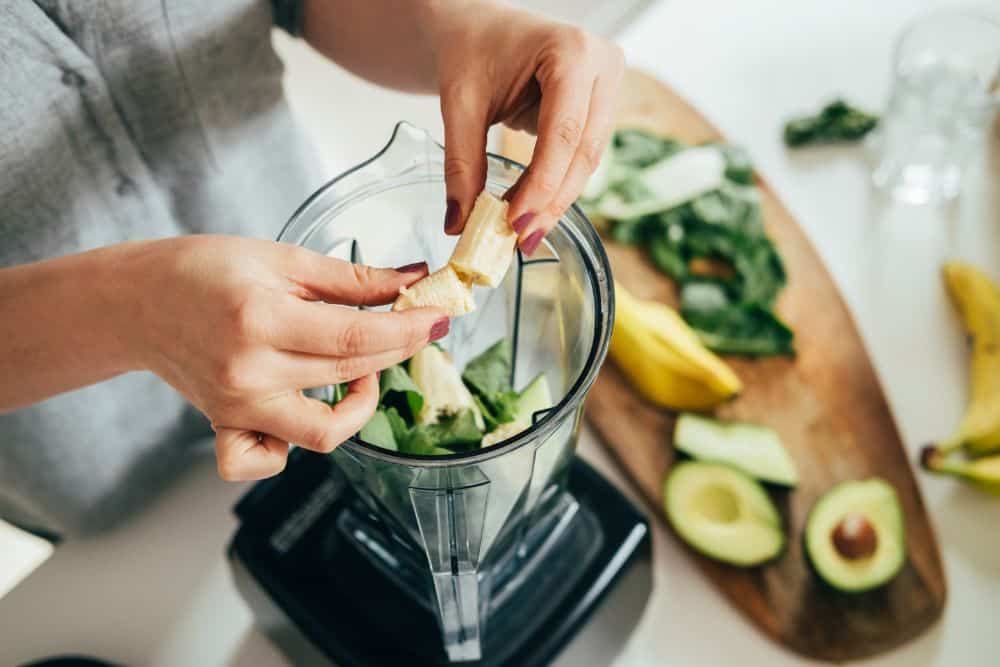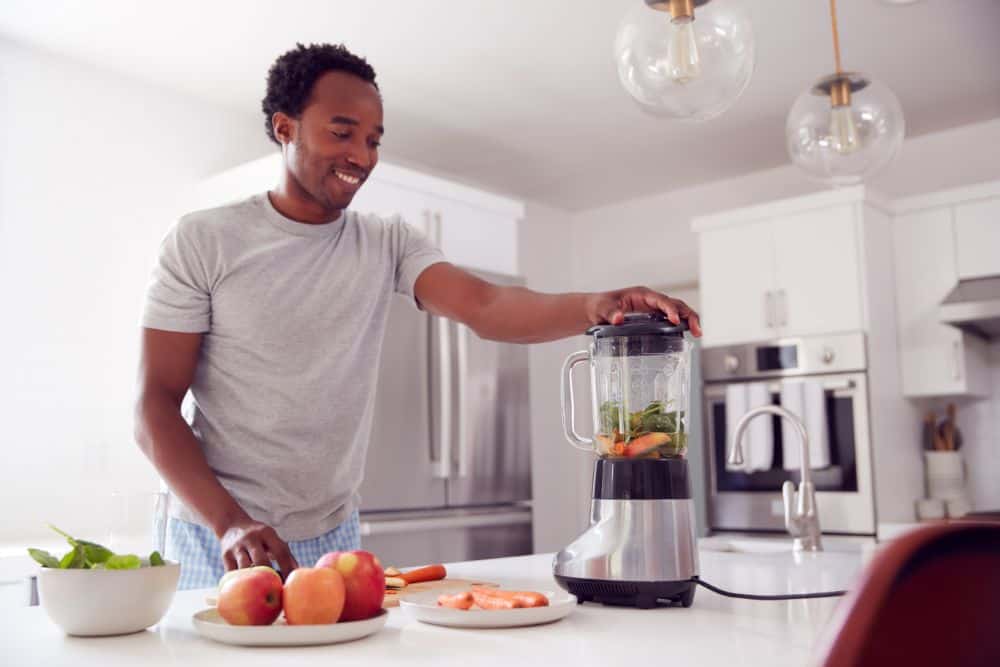Many of the standard-sized blenders on the market make the perfect smoothie starting around 1000 watts. Personal blenders work well for serving blended beverages for one and can be convenient for small-batch blending. Commercial blenders are making waves in homes and businesses because they excel at making everything from iced drinks to soups, nut butter, dressings, and countless other treats.
Ultimately which kind of blender you purchase and which blender wattage you choose will depend on your budget and culinary needs.
Not all blenders use the same wattage. For example, if you want your blender to crush ice and other hard foodstuffs to create the perfect smoothie, you will need a blender with at least 500 watts. If you want your blender to take the place of a food processor and put together doughs and other complex recipes, you will need something more powerful.
More powerful blenders are now often packaged as a combo set with the food processor and containers using the same base. Look for the wattage to suit your needs so that you can make the most use of your blender.

A comparison search for the Vitamix blender found that they run anywhere from 500 to 4000 watts. The Vitamix also offers multiple speeds, which increases its power and efficiency.
This blender uses only 900 watts but is limited in its capabilities. It has one speed and only blends for 60 seconds at a time.
Other Nutribullet blenders fluctuate between 600 watts and 1700 watts. The Nutribullet Rx is the maximum wattage used with 1700 watts. In addition, this blender offers heated blending making it perfect for soups.
This brand offers blenders that range from 1000 watts to 1600 watts.
This blender only has two wattages, starting at 200 watts. The next model goes up to 250 watts. This blender is a pretty limited-use product, and it does not look to offer multiple speeds.
Immersion blenders use a little less wattage if they are for individual use and run from 250 to 500 watts. A commercial immersion blender runs anywhere between 800 and 1000 watts. An immersion blender does not need the same power that a regular blender has since its job is strictly to mix ingredients and, in the case of a commercial immersion blender, sometimes to break up more significant bits of food while blending.
Several of the combination blender food processors use 1200 watts. Combination blenders have very similar wattage across brands, likely because the blender and the food processor do the same job, so no more power is needed for one task than the other.
Commercial blenders run anywhere from 1800 to 4000 watts, while a standard countertop blender runs at approximately 800 watts. The Oster countertop blender is a standard blender with six-speed and pulse settings. The multi-speed settings makes this blender efficient for mixing, even though its wattage classifies low on the power scale.
Even with its multi-speed settings, being under 1000 watts means that this countertop blender will not be as efficient at chopping more rigid materials such as frozen fruits and ice. Rather than having the right consistency for a smoothie, a blender with such low wattage could turn your smoothie into a clumpy, runny mess.
Conversely, a commercial blender with at least 1800 watts of power can efficiently blend, crush, pulse, and mix up smoothies that are the right consistency every time.
Higher wattage blenders will start at about 1000. To thoroughly crush ice, you will need a blender that operates at about 1500 watts. Higher wattage blenders can easily crush ice and other frozen foods, and they do it without overheating or jamming.

Efficiency in a blender comes down to how long the blender takes to mix ingredients and how sharp the blades are. Smoothies can be dense, containing wheat germ or flaxseed, and if a blender has wattage less than 500 watts, it can begin to slow down while trying to mix the ingredients. When a blender slows, it cannot handle the items inside, and will overheat, which can warm the ingredients, changing their taste and consistency.
A blender with low wattage is usually best used for lower quantities of softer ingredients which don't take long to blend. Overall, low wattage blenders are not very efficient when mixing the more challenging ingredients and will not suit your needs if you wish to make a wide variety of food items in your blender.
Not exactly. A low-wattage blender will be more efficient, but there is a difference between energy efficiency and wattage efficiency. Efficiency will depend on how long the blender runs for each use, so a more powerful blender could also be energy efficient because it runs for less time.
Lower wattage blenders will save you money, but it taking longer to blend means its electricity usage increases, lowering its efficiency. If you’re purchasing a blender to make a smoothie once or twice a day, you should buy something with higher wattage.
It would be a waste of money and space to have two blenders. Your best bet is to get one high-speed, higher wattage blender that can do everything from the simple to the complex. That way, rather than taking longer to mix even the simplest ingredients on a lower wattage blender, you can get the job done in half the time or less with a higher wattage blender.
A good blender will be at least 1000 watts with a high-speed motor. Sharp blades come in handy for chopping through solid ingredients like nuts, frozen fruit, and ice. To get the best blender for your needs, look at blenders in terms of size, motor speed, blade design, and check reviews.

Consider how often you will use your blender to pick a model that will produce the desired results. If you only need a blender for occasionally mixing some lighter ingredients then a lower wattage blender, or immersion blender will do just nicely. But if you’re going to use your blender for everything from making smoothies to preparing dressings and sauces for meals, investing in something that is both efficient and has a higher wattage is a better choice.
Bottom line, do your research before purchasing a blender. You probably won't need to splurge on a commercial-grade blender in a personal kitchen since you aren't preparing large amounts of food or blending complex ingredients on a regular basis. While their speed and power might make the job go even quicker, commercial blenders may be over the top for your needs.
If you are concerned with energy efficiency, read the manufacturer information to see if the blender meets your criteria. An efficient blender comes down to speed and how thoroughly it blends ingredients, so a lower wattage blender may use more energy if it takes too long to do the job.
